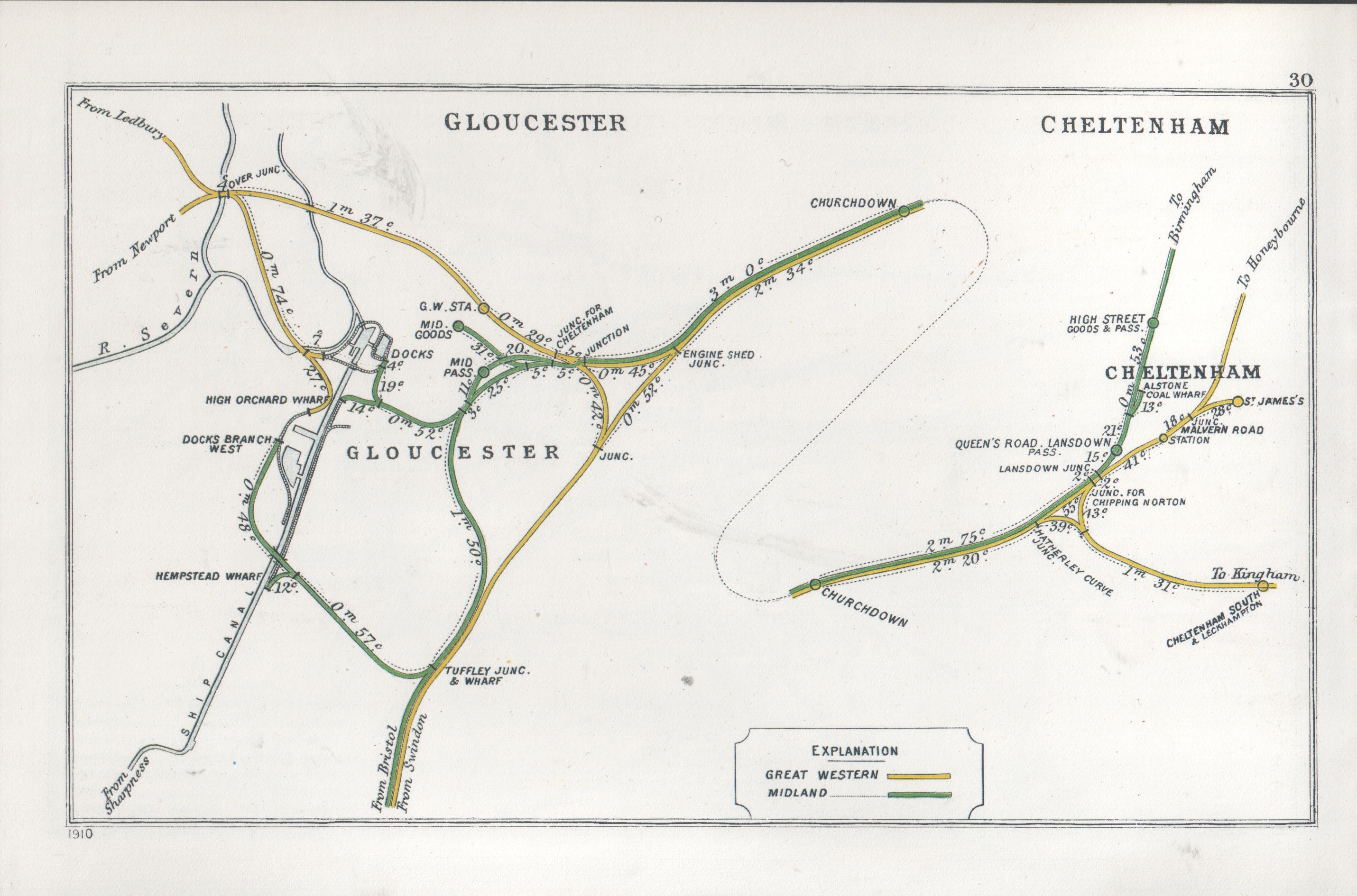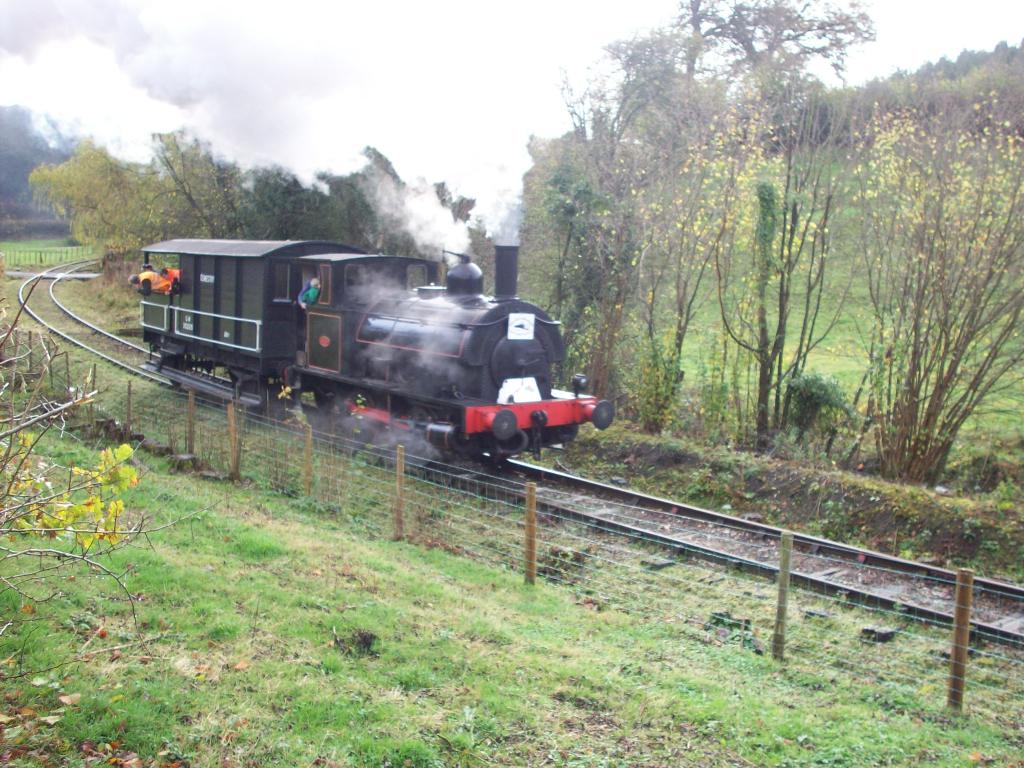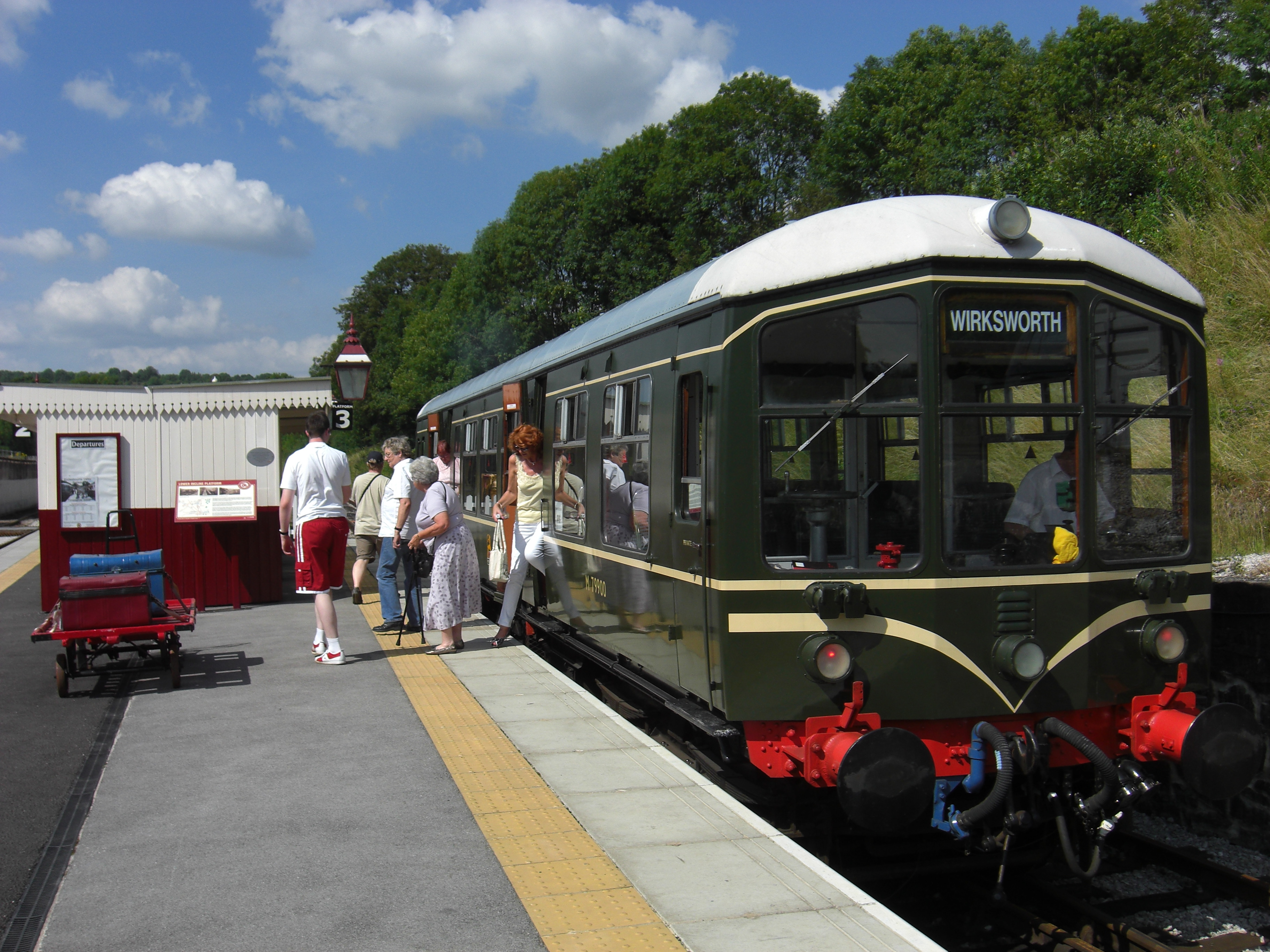|
British Rail Class 107
The British Rail Class 107 diesel multiple units were built by the Derby Works of British Railways and were introduced in 1960. The class looked similar to the later Class 108 units, but were heavier - having been built out of steel. Usage The Class 107s were initially built for suburban workings on the south side of Glasgow and the Class remained in BR's Scottish Region for its service life. When new, a number were used on Dundee/Arbroath services. In later years, they were used almost exclusively on services radiating from Glasgow Central to such destinations as Barrhead, East Kilbride, and Kilmacolm, and - prior to electrification - on Glasgow/Ayrshire services (especially Largs). Most were withdrawn from service by 1991. Many of the units went into departmental use after being withdrawn from passenger use. The class suffered from a structural problem, however, which could result in the bodies separating from the chassis under heavy braking. Orders Originally, there were ... [...More Info...] [...Related Items...] OR: [Wikipedia] [Google] [Baidu] |
Derby Carriage And Wagon Works
Derby Litchurch Lane Works (formerly Derby Carriage and Wagon Works) is a railway rolling stock factory in Derby, England. It was opened in the 19th century by the Midland Railway. The plant has produced rolling stock under the ownership of the Midland Railway. It is now owned by Alstom. History Midland Railway (1876–1923) Railway building began at Derby Works in 1840, when the North Midland Railway, the Midland Counties Railway and the Birmingham and Derby Railway set up engine sheds as part of their Tri Junct Station. When the three merged in 1844 to form the Midland Railway its first Locomotive and Carriage Superintendent Matthew Kirtley set out to organise their activities and persuaded the directors to build their own rolling stock, rather than buying it in (see Derby Works). By the 1860s the works had expanded to such an extent that he was considering reorganising it and, in 1873, it separated into the Midland Railway Locomotive Works, known locally as "The Loco", and ... [...More Info...] [...Related Items...] OR: [Wikipedia] [Google] [Baidu] |
British Railways
British Railways (BR), which from 1965 traded as British Rail, was a state-owned company that operated most of the overground rail transport in Great Britain from 1948 to 1997. It was formed from the nationalisation of the Big Four British railway companies, and was privatised in stages between 1994 and 1997. Originally a trading brand of the Railway Executive of the British Transport Commission, it became an independent statutory corporation in January 1963, when it was formally renamed the British Railways Board. The period of nationalisation saw sweeping changes in the railway. A process of dieselisation and electrification took place, and by 1968 steam locomotives had been entirely replaced by diesel and electric traction, except for the Vale of Rheidol Railway (a narrow-gauge tourist line). Passengers replaced freight as the main source of business, and one-third of the network was closed by the Beeching cuts of the 1960s in an effort to reduce rail subsidies. On privatis ... [...More Info...] [...Related Items...] OR: [Wikipedia] [Google] [Baidu] |
Gloucestershire Warwickshire Railway
The Gloucestershire Warwickshire Steam Railway (GWR, GWSR or Gloucs-Warks Steam Railway) is a volunteer-run heritage railway which runs along the Gloucestershire/Worcestershire border of the Cotswolds, England. The GWSR has restored and reopened around of track, operating between and . The most recent extension to Broadway (completed in 2018) involved the company raising £1.38 million. The 28 mile round trip on steam and heritage diesel trains follows part of the route of the former Great Western main line from Birmingham to Cheltenham. The GWSR has a long-term aim of extending a further from Broadway to the national rail network at (where one half of an island platform has since been partly rebuilt for future use). Overview The line was originally part of the Great Western Railway's Cheltenham– Stratford-upon-Avon–Birmingham line, known as the Honeybourne Line, built in 1900–1906, and runs through the Cotswold towns of Winchcombe and Bishop's Cleeve. The line ... [...More Info...] [...Related Items...] OR: [Wikipedia] [Google] [Baidu] |
Somerset & Dorset Railway Heritage Trust
The Somerset & Dorset Railway Heritage Trust (S&DRHT) is a heritage railway line in Somerset, England, that runs on a restored section of the Somerset and Dorset Joint Railway. The line is approximately 1 mile long and operates from Midsomer Norton South. History British Railways ownership The Evercreech to Bath section of the S&D, the section which Midsomer Norton South was a part of, opened on July 20 1874. It was a final attempt by the S&D to achieve profitability by connecting to Bath and crossing the Somerset Coalfield. This failed however, and the railway became jointly owned by the Midland Railway (MR) and the London and South Western Railway (LSWR). At the 1923 Grouping, the line became jointly owned by the London, Midland and Scottish Railway and the Southern Railway, as successors to the MR and LSWR respectively. After nationalisation in 1948 the line became part of the Southern Region, the era that the trust aims to preserve after. Following the Breeching R ... [...More Info...] [...Related Items...] OR: [Wikipedia] [Google] [Baidu] |
Tanat Valley Light Railway
The Tanat Valley Light Railway (TVLR) was a long standard gauge light railway. It ran westwards from Llanyblodwel in Shropshire, about 5 miles or 8 km south-west of Oswestry. It crossed the Wales–England border and continued up the Tanat valley, terminating at Llangynog in Powys. It opened in 1904, providing access to a fairly remote area, and transport facilities for slate production and agriculture. Its promoters were unable to raise the capital to construct the line, but a number of government grants and considerable generosity by the Cambrian Railways company enabled the building of the line. The company was always in debt and in 1921 was obliged to sell the line to the Cambrian Railways. Rural passenger use collapsed and the railway closed to passengers in 1951, and completely in 1964. A new Tanat Valley Light Railway Company was established, and in 2009 opened a heritage railway centre at Nantmawr, close to the earlier Tanat Valley line. History Proposals There wer ... [...More Info...] [...Related Items...] OR: [Wikipedia] [Google] [Baidu] |
Strathspey Railway (preserved)
The Strathspey Railway (SR) in Badenoch and Strathspey, Highland, Scotland, operates a heritage railway from Aviemore to Broomhill, Highland via Boat of Garten, part of the former Inverness and Perth Junction Railway (later part of the Highland Railway) which linked Aviemore with Forres. It is one of only a handful of former primary/secondary main lines to be preserved in Britain today. The route Aviemore The Strathspey Railway operates from platform 3 of Network Rail's Aviemore railway station. Until 1998 the railway's southern terminus was Aviemore Speyside about further north. Aviemore Speyside is no longer in regular use, although its platform has been retained as a fallback in case of problems with access to the Network Rail station. Coaling of the steam locomotives is carried out at a facility constructed in 2014 on the site of the former Aviemore Speyside station building. Its signal box, which was formerly at Garve West and transported from there in 1986, was ... [...More Info...] [...Related Items...] OR: [Wikipedia] [Google] [Baidu] |
British Rail British United Traction
British United Traction (BUT) was a manufacturer of railway equipment and trolleybuses. It was established in 1946 as a joint venture between AEC and Leyland. History British United Traction was established in 1946 when AEC and Leyland amalgamated their trolleybus interests. Neither had produced trolleybuses since early years of World War II. With both forecasting that demand would return to pre-war levels as networks began to close, a joint venture was formed. The new company was organised so that AEC would design and produce vehicles for the UK market while Leyland looked after export markets, although there were some exceptions to this. The only noticeable difference between the manufacturers output was the wheels. Initially vehicles were produced at Leyland's Ham, London factory, with the first vehicles completed in 1947 for Johannesburg. After the factory closed 1948, production moved to AEC's Southall and Leyland's Leyland, Lancashire factories. Following AEC's acqui ... [...More Info...] [...Related Items...] OR: [Wikipedia] [Google] [Baidu] |
Glasgow
Glasgow ( ; sco, Glesca or ; gd, Glaschu ) is the most populous city in Scotland and the fourth-most populous city in the United Kingdom, as well as being the 27th largest city by population in Europe. In 2020, it had an estimated population of 635,640. Straddling the border between historic Lanarkshire and Renfrewshire, the city now forms the Glasgow City Council area, one of the 32 council areas of Scotland, and is governed by Glasgow City Council. It is situated on the River Clyde in the country's West Central Lowlands. Glasgow has the largest economy in Scotland and the third-highest GDP per capita of any city in the UK. Glasgow's major cultural institutions – the Burrell Collection, Kelvingrove Art Gallery and Museum, the Royal Conservatoire of Scotland, the Royal Scottish National Orchestra, Scottish Ballet and Scottish Opera – enjoy international reputations. The city was the European Capital of Culture in 1990 and is notable for its architecture, cult ... [...More Info...] [...Related Items...] OR: [Wikipedia] [Google] [Baidu] |
British Rail Class 108
The British Rail Class 108 diesel multiple units were built by BR Derby from 1958 to 1961, with a final production quantity of 333 vehicles. Overview The 108 was formed as a 2, 3, or 4 car unit. Its aluminium body led the type to be classed a lightweight unit. These units stayed in regular service until 1990, when they began to be withdrawn from traffic. They were replaced on regional services by the new '' Sprinter'' derivative units, or by ''Turbo'' units on services around London. The final units lasted in traffic until October 1993, although many saw further use in departmental service, as sandite or route-learner units. Good condition on withdrawal and lack of asbestos has ensured that many of this class are now used on preserved railway lines. Orders Accidents and incidents *On 19 October 1987, the Glanrhyd Bridge over the River Towy at Llandeilo, Carmarthenshire was washed away by floodwater, a passenger train operated by a Class 108 unit fell into the river. Four ... [...More Info...] [...Related Items...] OR: [Wikipedia] [Google] [Baidu] |
Diesel Multiple Unit
A diesel multiple unit or DMU is a multiple-unit train powered by on-board diesel engines. A DMU requires no separate locomotive, as the engines are incorporated into one or more of the carriages. Diesel-powered single-unit railcars are also generally classed as DMUs. Diesel-powered units may be further classified by their transmission type: diesel–mechanical DMMU, diesel–hydraulic DHMU, or diesel–electric DEMU. Design The diesel engine may be located above the frame in an engine bay or under the floor. Driving controls can be at both ends, on one end, or in a separate car. Types by transmission DMUs are usually classified by the method of transmitting motive power to their wheels. Diesel–mechanical In a diesel–mechanical multiple unit (DMMU), the rotating energy of the engine is transmitted via a gearbox and driveshaft directly to the wheels of the train, like a car. The transmissions can be shifted manually by the driver, as in the great majority of first-gen ... [...More Info...] [...Related Items...] OR: [Wikipedia] [Google] [Baidu] |
List Of British Rail Diesel Multiple Unit Classes
This is a list of British Rail diesel multiple-unit train classes. For a historical overview of diesel multiple unit train development in Great Britain, see British railcars and diesel multiple units. Pre-nationalisation designs * GWR railcars * LMS railcars First Generation Early BR DMUs (79xxx series) TOPS classes Second generation Lightweight railcars Pacers Sprinters Turbos Networker Turbostar Coradias Desiro Civity Diesel-electric multiple units (DEMUs) Southern Region DEMUs Second Generation Voyager-style express DEMUs High-speed trains See also * List of British Rail electric multiple unit classes * British Rail locomotive and multiple unit numbering and classification * British Rail coach type codes British Railways coach designations were a series of letter-codes used to identify different types of coaches, both passenger carrying and non-passenger carrying stock (NPCS). The code was generally painted on the end of the coach but non-g ... [...More Info...] [...Related Items...] OR: [Wikipedia] [Google] [Baidu] |
Corridor Connection
A gangway connection (or, more loosely, a corridor connection) is a flexible connector fitted to the end of a railway coach, enabling passengers to move from one coach to another without danger of falling from the train. Origins: Coaches in British and American railways The London and North Western Railway (LNWR) was the first British railway to provide passengers with the means to move from one coach to another while the train was in motion. In 1869 the LNWR built a pair of saloons for the use of Queen Victoria; these had six-wheel underframes (the bogie coach did not appear in Britain until 1874), and the gangway was fitted to only one end of each coach. The Queen preferred to wait until the train had stopped before using the gangway. In 1887, George M. Pullman introduced his patented vestibule cars. Older railroad cars had open platforms at their ends, which were used both for joining and leaving the train, but could also be used to step from one car to the next. This prac ... [...More Info...] [...Related Items...] OR: [Wikipedia] [Google] [Baidu] |

.jpg)







